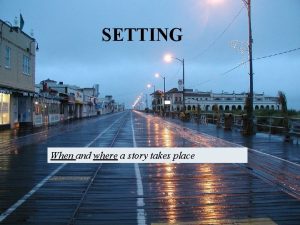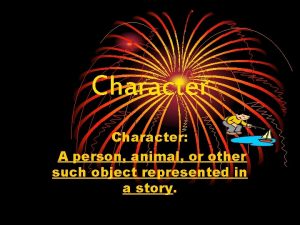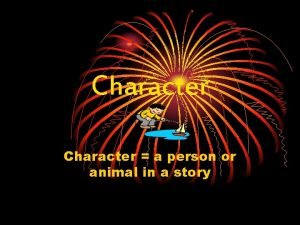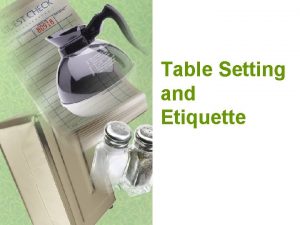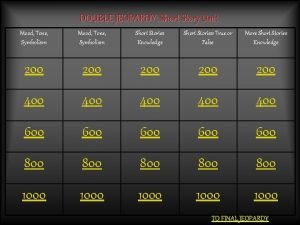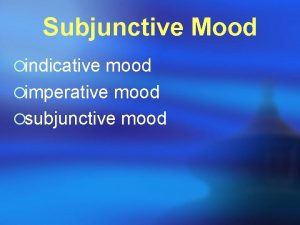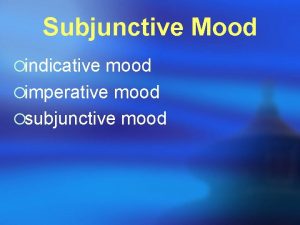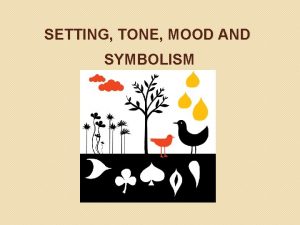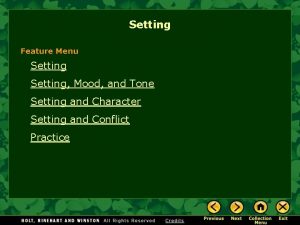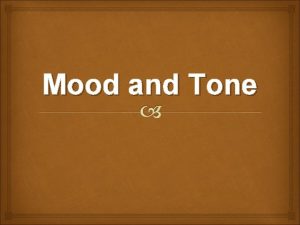Setting Components of Mood Where the story takes











- Slides: 11

Setting

Components of Mood • Where the story takes place: geographical location. Where is the action of the story occurring? • When the story occurs: time - When is the story taking place? (historical period, time of day, year, etc)

Functions of Setting • Establish Mood • Shape Character • Contribute to Conflict

Establishing Mood • mood or atmosphere - What feeling is created at the beginning of the story? Is it bright and cheerful or dark and frightening?

Establishing Mood • Writer determines the mood he/she wishes to create • Plans a setting which will helps create this mood Example: Mood of terror can be better developed by selecting a setting which is dark, or isolated, or full of creepy things rather than selecting a cheerful setting like a child’s birthday party

Establishing Social Conditions • social conditions - What is the daily life of the character's like? Does the story contain local colour (writing that focuses on the speech, dress, mannerisms, customs, etc. of a particular place)?

Shaping Characters • Characters act and react to the environment in which they are placed • Behavior of a character which may be appropriate in a particular setting may not be appropriate in other settings. Example: The behaviors a character may present when lost in a wilderness would be different from behavior of the character when he/she is in the comfort of his/her own home

Contribute to Conflict Some story conflicts can only take place in specific settings. Examples: • Survival stories often need to take place in dangerous, remote, or foreign settings in order for the character to experience the problems he/she encounters

Realism & Setting • It is important that the setting of a story seem realistic • Two ways to create realistic setting: t Use realistic details—real places Example: a story set in New York City may use names of real streets and neighborhoods, and real landmarks t Use sensory details to vividly describe the setting so readers can imagine how the setting looks, smells, sounds, etc.

Multiple Settings • Longer or more complex stories may utilize multiple settings • Allows for greater plot variety—as setting changes, the problems facing the character may change

Conclusion • Setting is important because of the way it can influence the characters & plot of a story • Setting is also important because by contributing to the mood of the story, it can effect a reader’s reaction to a story.
 When and where a story takes place
When and where a story takes place The main person animal or object in a place
The main person animal or object in a place What is a person or animal in a story
What is a person or animal in a story The story takes place in
The story takes place in What mood does the setting of sleepy hollow create
What mood does the setting of sleepy hollow create French setting table
French setting table Understanding jim crow (setting the setting)
Understanding jim crow (setting the setting) A two paragraph story
A two paragraph story The landlady vocabulary
The landlady vocabulary Jeopardy tone
Jeopardy tone Tone and mood examples
Tone and mood examples Similes in the sniper
Similes in the sniper
